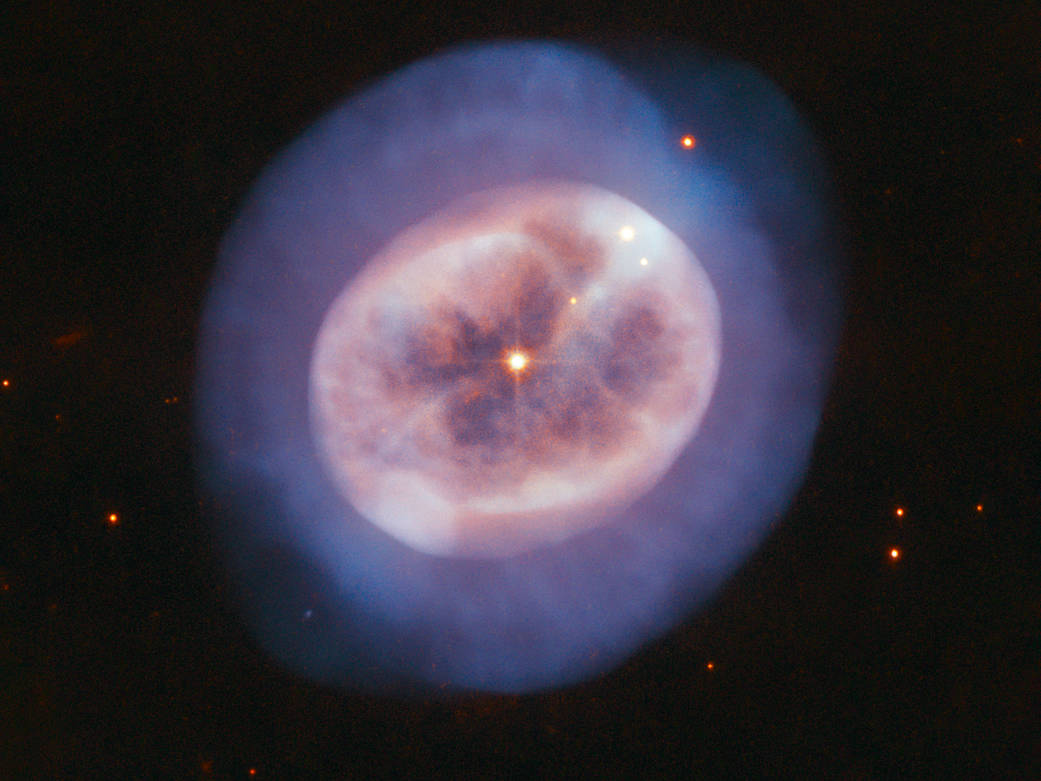Although it looks more like an entity seen through a microscope than a telescope, this rounded object, named NGC 2022, is certainly not algae or tiny, blobby jellyfish. Instead, it is a vast orb of gas in space, cast off by an aging star. The star is visible in the orb’s center, shining through the gases it formerly held onto for most of its stellar life.
When stars like the Sun grow advanced in age, they expand and glow red. These so-called red giants then begin to lose their outer layers of material into space. More than half of such a star’s mass can be shed in this manner, forming a shell of surrounding gas. At the same time, the star’s core shrinks and grows hotter, emitting ultraviolet light that causes the expelled gases to glow.
This type of object is called, somewhat confusingly, a planetary nebula, though it has nothing to do with planets. The name derives from the rounded, planet-like appearance of these objects in early telescopes.
NGC 2022 is located in the constellation of Orion (the Hunter).
Text credit: ESA (European Space Agency)
Image credit: ESA/Hubble & NASA, R. Wade
虽然它看起来更像一个通过显微镜而不是望远镜看到的实体,但这个名为NGC 2022的圆形物体肯定不是藻类或微小的、有斑点的水母。相反,它是太空中一个巨大的球形气体天体,由一颗老化的恒星抛出。这颗恒星在球体的中心可见,它通过气体发出耀眼的光芒,而这些气体曾是它维持恒星生命的主要物质。
当像太阳这样的恒星在年龄增长时,它们会膨胀并发出红光。这些所谓的红巨星开始失去外层物质进入太空。这种恒星质量的一半以上可以以这种方式脱落,形成一层环绕的气体。与此同时,恒星的核心收缩并变热,释放出紫外线,导致被排出的气体发光。
这类天体被称为行星状星云,有点令人困惑,尽管它与行星无关。这个名字来源于早期望远镜中这些天体的圆形、类行星的外观。
NGC 2022位于猎户座(猎人星座)。
资料来源: ESA (欧洲航天局)
影像来源: ESA/Hubble & NASA, R. Wade



